Outer Space & Universe
Outer Space & Universe
Space, also known as outer space, is the near-vacuum between celestial bodies. It is where everything (all of the planets, stars, galaxies and other objects) is found.
On Earth, space begins at the Kármán line (100 km above sea level). This is where Earth's atmosphere is said to stop and outer space begins. This is not a firm boundary but is a convention used by scientists and diplomats.
Items in space are free to move back and forth; up and down; and left and right. These three dimensions are what make 3D space. Items also move forward through time, which is sometimes called the fourth dimension.
The majority of space contains very little matter and so most of it is a vacuum. Scientists do not know how big space is but we do know that space is extremely big, and is always expanding.
According to the big bang theory, all matter and energy in the Universe was compressed into a very small space. Then it exploded and started expanding. Space is still growing in size today; this means the distance from one galaxy to distant galaxies is getting longer.
Gravity is the force that keeps the Moon in orbit around the Earth and the planets in orbit around the Sun. Gravity can stretch and bend space similar to how a heavy ball placed on a stretched sheet of rubber will cause the rubber to stretch. The scientist who discovered that space can bend is named Albert Einstein. How gravity bends space is part of his theory of general relativity.
Astronauts, Cosmonauts, Taikonauts and Spationauts
An astronaut is any person who is trained by NASA to travel and perform tasks in space. Although the space traveler may not necessarily be a United States citizen, each astronaut does go through a rigorous training regiment by the National Aeronautics and Space Administration. Other space travelers go by other names then astronaut depending on their country of origin.
In the United States, astronaut is derived from the Greek words ástron (star) and nautis (sailor). While, in Russia, a space traveler goes by the name космонавт (English: cosmonaut), which is derived from the Greek words kosmos (universe) and nautis (sailor). Westerners call a space traveler from China a taikonaut, based on the 1998 writings of Chiew Lee Yik and Chen Lan where the term tàikōng (great emptiness), Chinese for “space”. In China, the term yuháng yuán (universe navigator) is used for space traveler.
Only the United States of America (United States), Russia (earlier, the Union of Soviet Socialist Republics), and the People’s Republic of China (China) have sent manned spacecraft into space. Other countries have assisted these countries by sending their own space travelers on space missions. For instance, a French space traveler is called a spationaut (from the French word spationaute), which is derived from the Latin spatium (space) and Greek nautis (sailor). (plural in Greek nautes = sailors)
-
04:24

Space to Ground: The Power of 10: Feb. 28, 2025
Added 44 Views / 0 LikesNASA's Space to Ground is your weekly update on what's happening aboard the International Space Station. Got a question or comment? Use #AskNASA to talk to us.Learn more about the important research being operated on Station:https://www.nasa.gov/iss-scien
-
00:30

Pan: NGC 1637
Added 43 Views / 0 LikesThe subject of this NASA/ESA Hubble Space Telescope Picture of the Week is NGC 1637, a spiral galaxy located 38 million light-years from Earth in the constellation Eridanus.This image comes from an observing programme dedicated to studying star formation
-
02:30
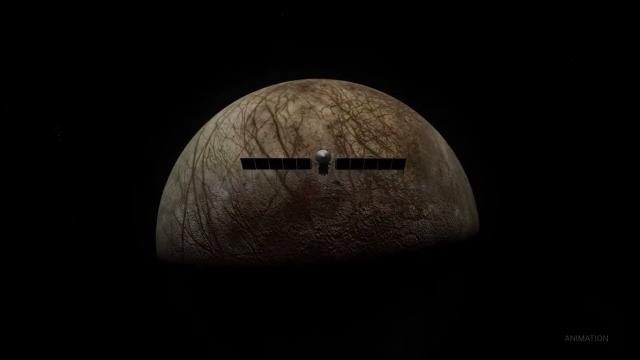
NASA in 2024 - See the Highlights
Added 43 Views / 0 LikesNASA runs down its achievements in 2024 in this highlight video. Credit: NASA
-
04:03

U.S. Spacewalk 92 Animation (Radio Frequency Group 2 5)
Added 43 Views / 0 LikesAn animation of U.S. spacewalk 92 scheduled for Thursday, Jan. 23, when two NASA astronauts will exit the station’s Quest airlock to complete removal of a faulty electronics box, called a radio frequency group, from a communications antenna on the starboa
-
09:01
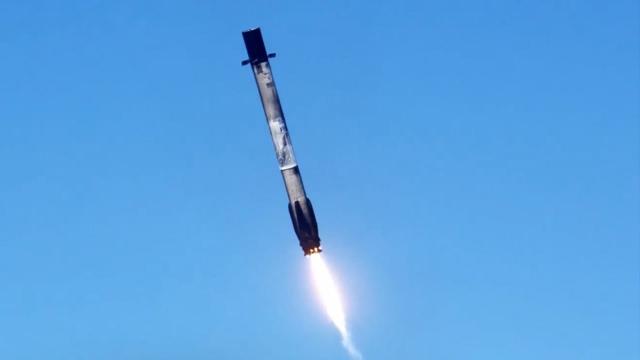
Blastoff! SpaceX launches 131 rideshare satellites, nails landing in California
Added 43 Views / 0 LikesA SpaceX Falcon 9 rocket launched the Transporter 12 mission carrying 131 different satellites to orbit from Vandenberg Space Force Base. The rocket lifted off on Jan. 14, 2024 at 2:09 p.m. EST (1909 GMT; 11:09 a.m. local California time).The first stage
-
01:17
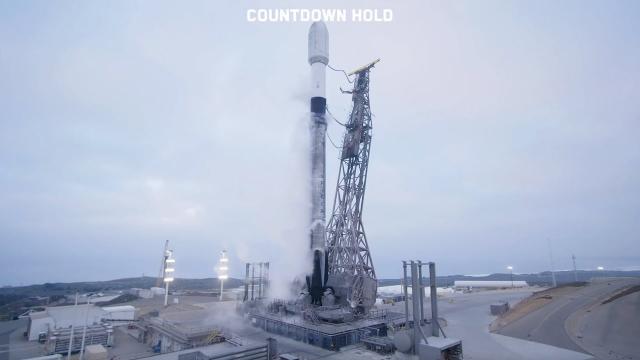
SpaceX scrubs Starlink launch at T-11 seconds due to 'possible aircraft in airspace'
Added 43 Views / 0 LikesSpaceX scrubbed the launch of a new Starlink batch from California on Jan. 19, 2025. The launch was "held for a possible aircraft in the airspace" according to mission control. Credit: SpaceX
-
08:54
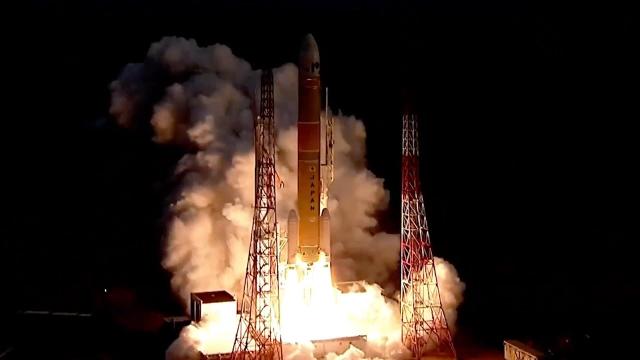
Blastoff! Japan's H3 rocket launches Michibiki 6 navigation satellite
Added 43 Views / 0 LikesJapans's H3 rocket launched the Michibiki 6 navigation satellite from Tanegashima Space Center on Feb. 2, 2025 at 3:30 a.m. EST (0830 GMT; 5:30 p.m. local Japan time). Full Story: https://www.space.com/space-exploration/launches-spacecraft/japan-h3-rocket
-
09:25
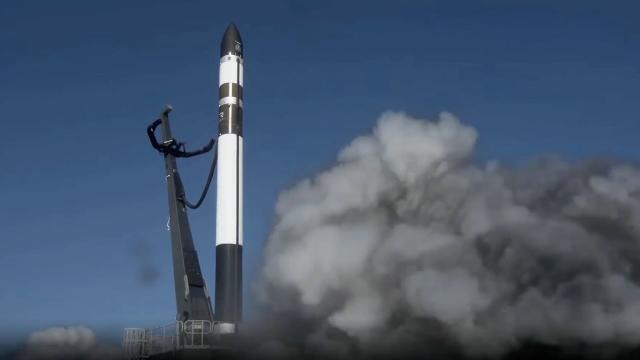
Blastoff! Rocket Lab launches 5 'Internet of Things' satellites from New Zealand
Added 43 Views / 0 LikesA Rocket Lab Electron rocket launched 5 Kinéis 'Internet of Things' satellites from New Zealand on Feb. 8. 2025. at 3:43 p.m. EST (2043 GMT; 9:43 a.m. Feb. 9 local New Zealand time).Credit: Rocket Lab
-
01:09
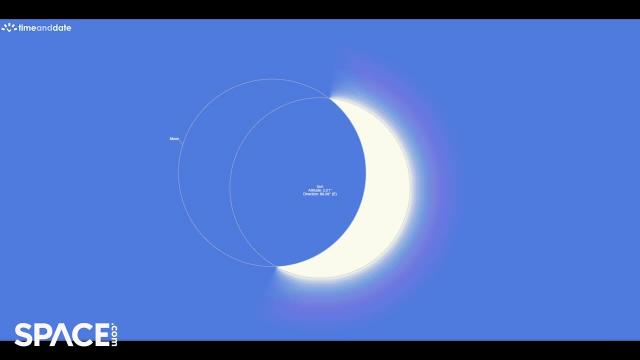
Partial Solar Eclipse in March 2025 - What it will look like? See a map
Added 43 Views / 0 LikesOn March 29, 2025, a partial solar eclipse visible in the northeastern part of North America, much of Europe and Russia. See an animation of what it will look like and a visibility map from Timeanddate.com. [Full Story](https://www.space.com/the-universe/
-
00:30

Pan: NGC 5643
Added 42 Views / 0 LikesToday’s NASA/ESA Hubble Space Telescope Picture of the Week features the glorious spiral galaxy NGC 5643, which is located roughly 40 million light-years away in the constellation Lupus. NGC 5643 is what’s known as a grand design spiral, referring to how
-
00:30
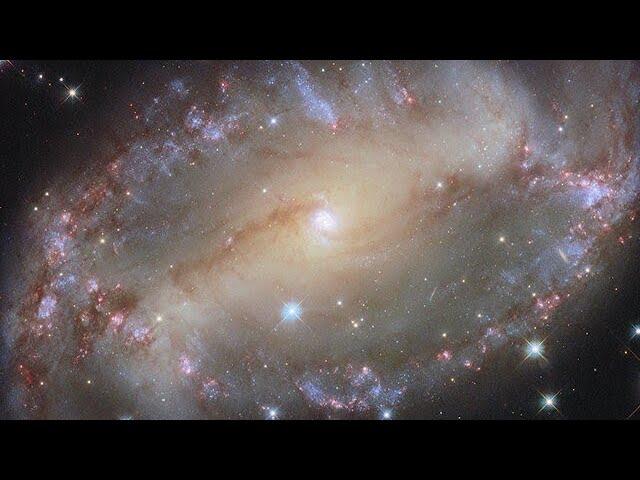
Pan: NGC 2566
Added 42 Views / 0 LikesFeatured in this NASA/ESA Hubble Space Telescope Picture of the Week is the spiral galaxy NGC 2566, which sits 76 million light-years away in the constellation Puppis. A prominent bar of stars stretches across the centre of this galaxy, and spiral arms em
-
11:39
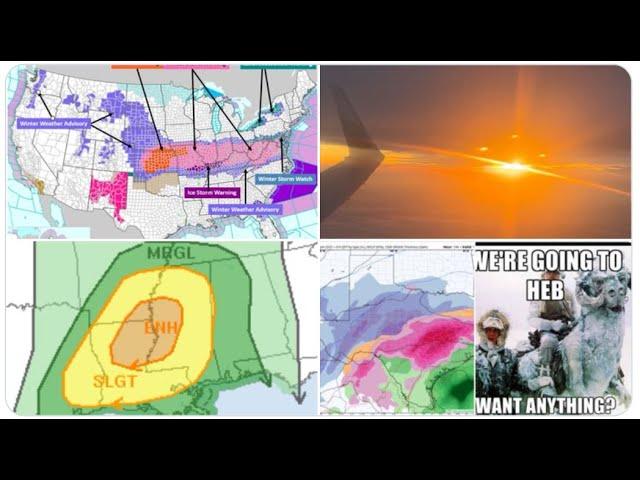
BEWARE! Winter Storm Blair Witch is a B!tch! and ARE YOU READY FOR THE 1ST TEXAS SNOW DAY OF 2025?
Added 42 Views / 0 LikesYOU ARE FANTASTIC!thank you.God bless everyone,Thttps://www.paypal.me/THORnewshttps://venmo.com/TEric-Lewisonhttps://www.patreon.com/thornews
-
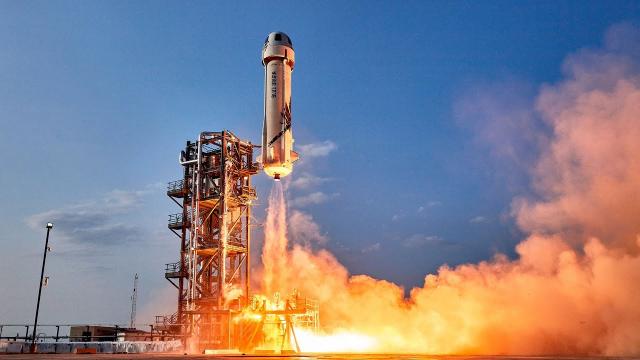
Watch live! Blue Origin New Shepard launches to simulate moon gravity and more
Added 41 Views / 0 LikesNew Shepard is a rocket manufactured by Blue Origin for space tourism, however the newest mission will be simulating the Moon's gravity and flying 30 payloads to test lunar related technology. You can watch the action live here or at Space.com!
-
01:00
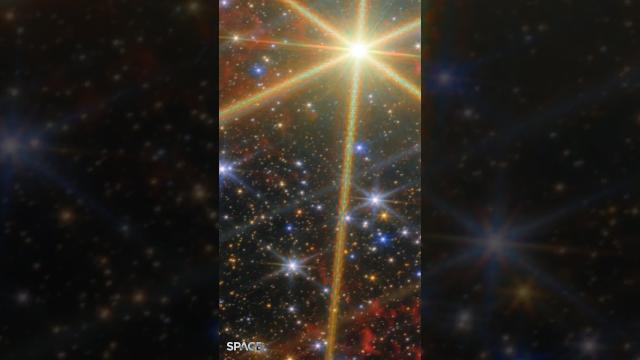
Cosmic Valentine's Day ❤️ #webbtelescope @LoganSpaleta #music #hubble #space #shorts
Added 41 Views / 0 LikesFor Valentine's Day see some of Space.com's favorite views from the James Webb Space Telescope and Hubble Space Telescope set to new music from @LoganSpaleta https://found.ee/loganspaletajustakissCredit:Interacting galaxies Arp 273 | Hubble Space Telescop
-
04:39
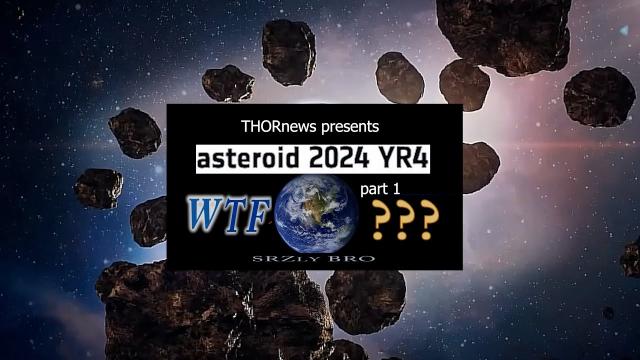
Chance of 'City Killer' Asteroid 2024 YR4 hitting Earth Triples! - NASA
Added 41 Views / 0 LikesSuit up, Stay Cool & Game faces on.God bless everyone,Thttps://www.paypal.me/THORnewshttps://venmo.com/TEric-Lewisonhttps://www.patreon.com/thornewsper phys.org article'City killer' asteroid now has 3.1% chance of hitting Earth: NASAby Issam Ahmed with Da
-
03:08
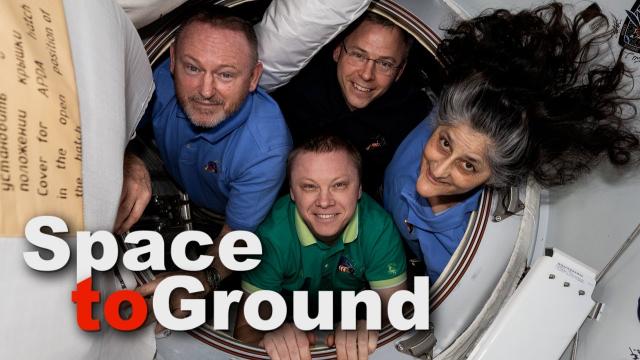
Space to Ground: Pushing Boundaries: Feb. 21, 2025
Added 41 Views / 0 LikesNASA's Space to Ground is your weekly update on what's happening aboard the International Space Station. Got a question or comment? Use #AskNASA to talk to us.Learn more about the important research being operated on Station:https://www.nasa.gov/iss-scien
-
01:03
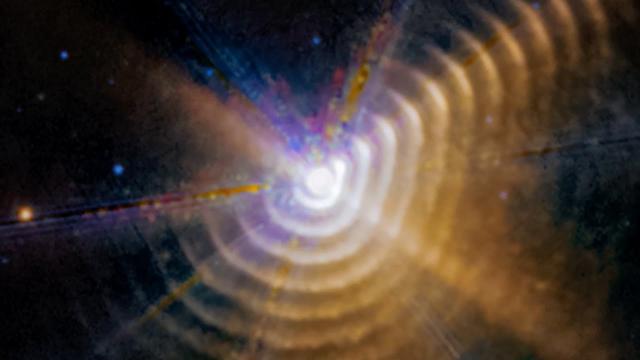
James Webb Space Telescope sees rapid expansion of Wolf-Rayet 140 dust shells
Added 40 Views / 0 Likes"Two massive stars in Wolf-Rayet 140 swing past one another, their winds collide, material compresses, and carbon-rich dust forms," according to NASA. Time-lapsed James Webb Space Telescope imagery of the system has revealed that every shell is racing awa
-
02:49
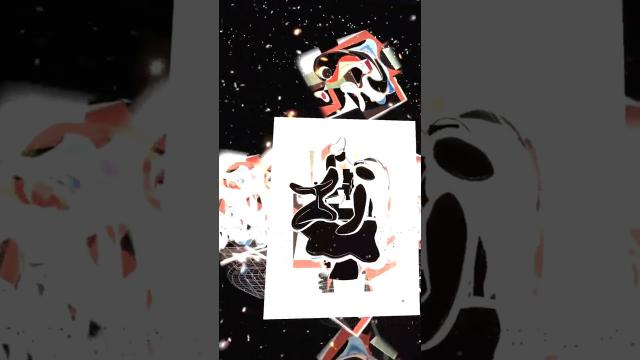
Gravitational lensing inspires 'Twin Quasars' at the Whitney museum - Ashley Zelinskie explains
Added 40 Views / 0 LikesArtist Ashley Zelinskie takes you behind the scenes on how she created the three dimensional "Twin Quasars" artwork currently at on exhibit at the Whitney Museum's Virtual Landscape. Video created by Gabi Galvin (https://www.instagram.com/gabigalvin/)Full
-
01:09
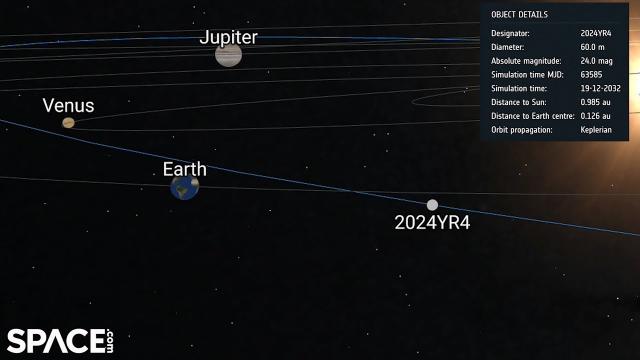
Asteroid 2024 YR4 safely flies by Earth in 2032 - ESA and NASA orbit animations
Added 40 Views / 0 LikesAsteroid 2024 YR4 is estimated to be about 196 feet (60 meters) wide and will have a close approach to Earth in 2032. Full Story: https://www.space.com/asteroid-2024yr4-odds-increase-no-concern)"The odds of the asteroid 2024 YR4 impacting Earth in 2032 ha
-
01:06
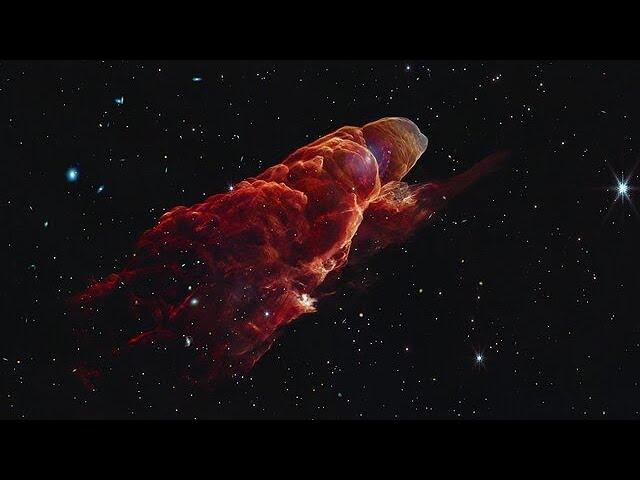
Herbig-Haro 49/50 Data Visualisation
Added 40 Views / 0 LikesThis video provides special data visualisation of Herbig-Haro 49/50, as seen by the NASA/ESA/CSA James Webb Space Telescope. This is an outflow from a nearby still-forming star, in high-resolution near- and mid-infrared light with the NIRCam and MIRI inst
